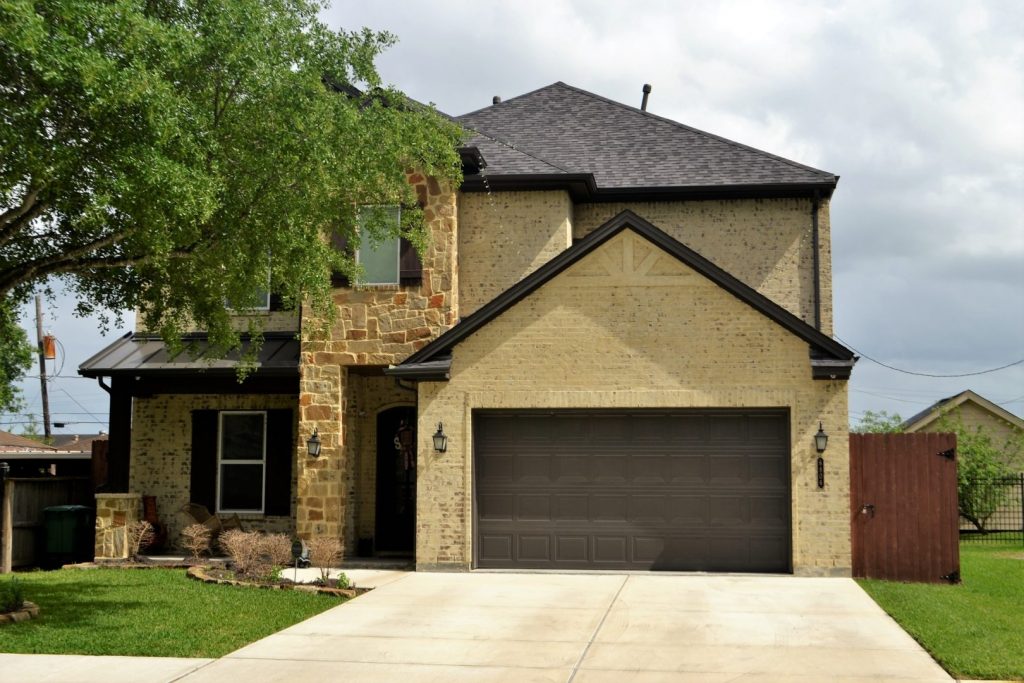
Nice wide driveway and sidewalk with continuous, even footing allows visitors good access
Visitability is an important accessibility concept that often goes unnoticed in favor of other treatments.
The idea of visitability is that we can offer solutions for our clients to make their properties totally accessible whether it’s done for them or for guests of theirs, as they decide to visit homes at various times throughout the year.
This is a particularly appropriate time of year to be thinking about visitability for a few reasons because of the calendar. First, we are coming into a season when people like to visit each other to help celebrate the holidays or add a little socialization to the acquired indoor environment people find themselves in when the weather turns cooler and the days grow shorter.
Second, during the colder months, people dress in heavier clothing and more layers. What was easy or relatively easy – depending on the person – to do in July when wearing light clothing such as shorts, tee-shirts, and sandals or flip-flops is a lot more challenging when wearing heavier jeans, jackets, gloves, a sweater, and possibly even more. This encumbers our mobility to an extent and can affect our balance as well as our vision (if our face is wrapped with a hat or scarf).
Third, is the cold itself. The biting wind can throw off our gait, it can cause us to shiver, and it can make our eyes water and nose run – uncomfortable to be sure but potentially unsafe as we try to see and act normally even though the weather is challenging us. If the sidewalks have ice or snow on them, this becomes a balance and mobility challenge to continue walking without losing our balance or slipping.
So, people are visiting each other as much or more than they do during other seasons of the year. The cooler or even colder temperatures mean more and thicker clothing and sometimes slippery footing conditions. We need to anticipate this and design for it. Even when other conditions are not a high priority, or the clients don’t desire to have anything done, creating accessible, visitable conditions are something that nearly everyone can use.
The classic definition of visitability is providing a means of access for anyone using a wheelchair to easily navigate the main floor of the home, including the kitchen, hallway, living or family room, kitchen, and the guest or hallway bathroom or powder room. This is fine, but it’s too small of a concept.
True visitability begins at the curb and continues to the back fence or alley (property line). What good does it do to make sure someone can navigate the inside of the home if they can’t get to the front door and then inside without significant challenges? Likewise, what about inviting people over to experience activities in the backyard (drinks, food, fellowship, movies, games, swimming, a fire, or other activity) when they can’t go easily to the backyard directly or move from the inside of the home to the backyard?
Visitability is always in style and it receives far too little emphasis and consideration when discussing aging in place strategies, universal design, or accessibility. It underlies all of the other concepts when understood and put into practice.
We begin a visitability design by deconstructing what we see in front of us. Whether it’s sidewalks, curbs, landscaping, steps, porches, driveways, or anything else that is walked on to get from the perimeter of the yard (street or sidewalk), we need to ask ourselves if someone might have an issue standing or walking on that surface. Anytime the answer is yes, we have a decision to make about rectifying it.
Whenever someone is using a walker, wheelchair, cane, or crutches – or they just are a little unsteady on their feet – having a walkway that is not very wide or not solid is not helpful. Gravel, mulch, or other loose materials, or stones or pavers that are not tightly spaced to form a continuous even surface also present issues.
Trees roots growing on top of sidewalks or ones that have grown underneath and caused the pavement to crack and swell upward create hazards for walking across them safely and easily where an assistive device is being used or not. Other plant material such as dropped flower blossoms, leaves, twigs, or seeds can make using walkways less than ideal.
Some walkways do not drain very well and can retain water after a rain (or snow) or allow irrigation water to pool on them. After a time, slippery mold can build up along the edges and create an additional safety concern.
This is before someone even gets to the area near the entrance where they may encounter steps, small waiting areas, and an unprotected space from the weather.
Exterior front yard visitability is a major concern and a place where money and effort can be focused to create safe access.
